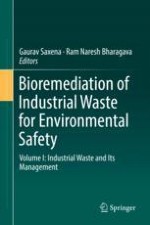2020 | OriginalPaper | Chapter
8. Management of Petroleum Industry Waste Through Biosurfactant-Producing Bacteria: A Step Toward Sustainable Environment
Authors : Amar Jyoti Das, Shweta Ambust, Rajesh Kumar
Published in: Bioremediation of Industrial Waste for Environmental Safety
Publisher: Springer Singapore
Activate our intelligent search to find suitable subject content or patents.
Select sections of text to find matching patents with Artificial Intelligence. powered by
Select sections of text to find additional relevant content using AI-assisted search. powered by
